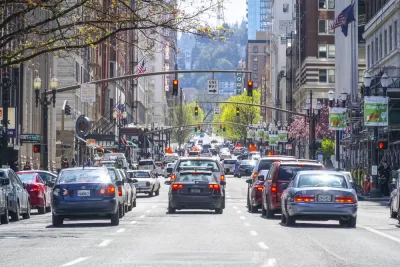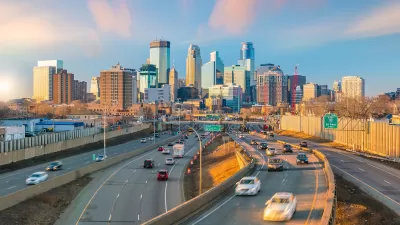The pandemic let many people experience a commute-free lifestyle, but can we reduce rush-hour traffic as we make our return to physical workplaces?

"Every recent survey reports that the rush-hour commute is, to most of the drivers who endure it, the most difficult and unpleasant part of their day," writes Alan Ehrenhalt. "It is also the most alienating." Yet "[i]t shouldn’t be forgotten that the solo commute is a creation of the 20th century. In Victorian times, work and home life were concentrated in the same places." In fact, "[t]he nightmares of rush hour were and are creatures of the automobile, the modern suburb and the zoning ordinances that have rigidly separated commercial and industrial enclaves from the residential districts of metro areas."
During the pandemic, travel patterns shifted significantly. "Drivers, especially those working at home, have been spacing out their travel much more evenly over the course of the day," flattening the rush hour traffic peaks. "Is there a way we can buck the historical trend of eventual return to congestion and keep something like the current arrangement going?"
In lieu of a scenario where a significant percentage of workers keep working from home(a possibility that carries its own rippling implications), Ehrenhalt argues that a simple solution to the commute problem "would be to bring most remote workers back to the center city but to stagger their hours, as has been happening to a limited extent already." Our "nightmare rush hours" are a result of "inefficient management practices — we could wake up from the nightmare with a commitment to sensible scheduling."
Of course, writes Ehrenhalt, "the most appealing long-term answer is for more of us to live near the places where we work," reducing the need for extensive travel to and from work. The commuting problem can only be solved by eliminating the need for it for more people.
FULL STORY: Is There an Exit Ramp from the Rush-Hour Nightmare?

Study: Maui’s Plan to Convert Vacation Rentals to Long-Term Housing Could Cause Nearly $1 Billion Economic Loss
The plan would reduce visitor accommodation by 25,% resulting in 1,900 jobs lost.

North Texas Transit Leaders Tout Benefits of TOD for Growing Region
At a summit focused on transit-oriented development, policymakers discussed how North Texas’ expanded light rail system can serve as a tool for economic growth.

Why Should We Subsidize Public Transportation?
Many public transit agencies face financial stress due to rising costs, declining fare revenue, and declining subsidies. Transit advocates must provide a strong business case for increasing public transit funding.

How to Make US Trains Faster
Changes to boarding platforms and a switch to electric trains could improve U.S. passenger rail service without the added cost of high-speed rail.

Columbia’s Revitalized ‘Loop’ Is a Hub for Local Entrepreneurs
A focus on small businesses is helping a commercial corridor in Columbia, Missouri thrive.

Invasive Insect Threatens Minnesota’s Ash Forests
The Emerald Ash Borer is a rapidly spreading invasive pest threatening Minnesota’s ash trees, and homeowners are encouraged to plant diverse replacement species, avoid moving ash firewood, and monitor for signs of infestation.
Urban Design for Planners 1: Software Tools
This six-course series explores essential urban design concepts using open source software and equips planners with the tools they need to participate fully in the urban design process.
Planning for Universal Design
Learn the tools for implementing Universal Design in planning regulations.
City of Santa Clarita
Ascent Environmental
Institute for Housing and Urban Development Studies (IHS)
City of Grandview
Harvard GSD Executive Education
Toledo-Lucas County Plan Commissions
Salt Lake City
NYU Wagner Graduate School of Public Service





























